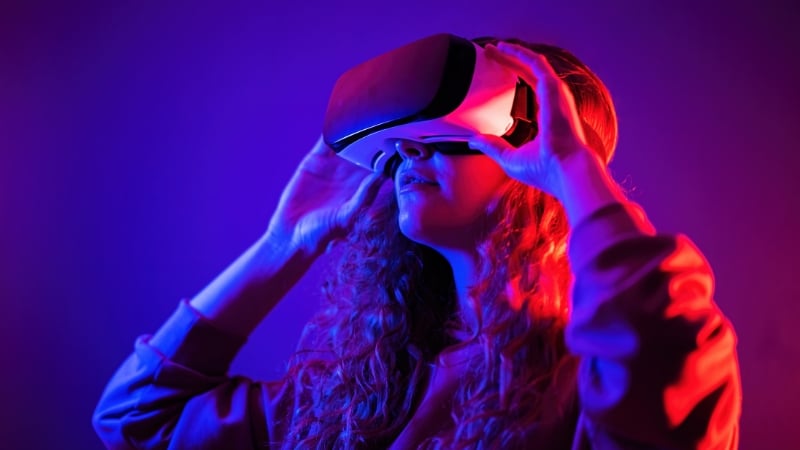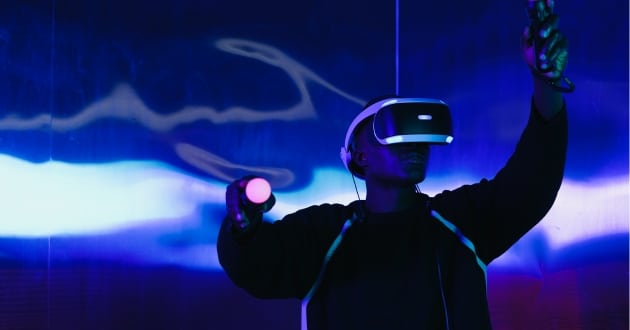Virtual reality headsets have revolutionized the way we experience digital content. These devices immerse users in a three-dimensional world, offering a level of interaction and immersion previously unattainable. But what exactly are virtual reality headsets, and how do they work? This section delves into the fundamentals of virtual reality technology and its applications.
A virtual reality headset is a device that provides a simulated experience, which can be similar to or completely different from the real world. It typically includes a head-mounted display with a screen in front of the eyes, and it may also include sensors for head tracking and motion detection. These headsets can be used for various purposes, including gaming, education, training, and therapy.
How Do Virtual Reality Headsets Work?

The core of a virtual reality headset lies in its ability to track the user’s head movements and adjust the display accordingly. This creates the illusion of being present in a three-dimensional environment. Most headsets use a combination of gyroscopes, accelerometers, and magnetometers to track movement. Additionally, they employ high-resolution displays and advanced optics to deliver a convincing and immersive experience.
The Evolution of Virtual Reality Headsets
Virtual reality technology has come a long way since its inception. Understanding its history helps appreciate the advancements and the potential future of virtual reality headsets.
Early Beginnings
The concept of virtual reality dates back to the 1960s when Ivan Sutherland developed the first head-mounted display system, known as the “Sword of Damocles.” This device was rudimentary compared to modern standards but laid the foundation for future developments.
Modern Advancements
Fast forward to the 21st century, and we see a significant leap in virtual reality headset technology. Companies like Oculus (acquired by Facebook), HTC, and Sony have introduced consumer-friendly VR headsets that offer high-definition displays, precise tracking, and expansive content libraries. These advancements have made VR accessible to a broader audience.
Types of Virtual Reality Headsets
There are several types of virtual reality headsets, each catering to different needs and preferences. In this section, we’ll explore the main categories and their unique features.
PC-Based VR Headsets
PC-based VR headsets, such as the Oculus Rift and HTC Vive, require a connection to a powerful computer. They offer the highest quality experience with advanced graphics and tracking capabilities. These headsets are ideal for gamers and professionals who demand top-notch performance.
Standalone VR Headsets
Standalone VR headsets, like the Oculus Quest, do not require a PC or external sensors. They are all-in-one devices that offer a balance between performance and convenience. These headsets are perfect for casual users who want a hassle-free experience.
Console VR Headsets
Console VR headsets, such as the PlayStation VR, are designed to work with gaming consoles. They provide a middle ground between PC-based and standalone headsets, offering good performance at a more affordable price point.
Gaming and Entertainment
Gaming remains one of the most popular uses for virtual reality headsets. VR games provide an immersive experience that traditional games cannot match. Additionally, VR headsets are used for watching movies, exploring virtual worlds, and even attending virtual concerts.
Unity: Powering Virtual Reality Development
When it comes to developing immersive and interactive experiences in virtual reality (VR), Unity stands out as one of the most powerful and versatile platforms available. Unity is a comprehensive game development engine that has become a cornerstone for VR developers due to its robust feature set, flexibility, and user-friendly interface.
Unity supports a wide range of VR headsets and platforms, making it an ideal choice for creating cross-platform VR applications. Developers can leverage Unity’s extensive library of assets, tools, and plugins to streamline the development process and bring their VR visions to life. Additionally, Unity’s real-time rendering capabilities and physics engine ensure that VR experiences are not only visually stunning but also highly responsive and realistic.
Setting Up Your Virtual Reality Headset
Proper setup is vital to ensure the best experience with your virtual reality headset. This section provides a step-by-step guide to get you started.
1. Unboxing and Initial Setup
When you first unbox your headset, carefully follow the manufacturer’s instructions. Connect any necessary cables, install required software, and ensure your play area is free of obstacles.
2. Calibration and Configuration
Calibration is necessary for accurate tracking. Follow the on-screen prompts to calibrate the headset and controllers. Adjust the headset to fit comfortably and securely on your head.
3. Troubleshooting Common Issues
If you encounter issues, such as tracking problems or display errors, refer to the troubleshooting section of the user manual. Common solutions include updating software, recalibrating sensors, and ensuring proper cable connections.
Exploring the Role of Virtual Reality in Computer Aided Design
Virtual reality (VR) has significantly impacted various industries, and one of the areas where it shows great promise is in computer aided design. By integrating VR with computer aided design (CAD) software, designers and engineers can create and manipulate 3D models in a virtual environment. This immersive approach allows for a more intuitive understanding of spatial relationships and design intricacies, enhancing both the efficiency and accuracy of the design process.
In VR, designers can interact with their models at a one-to-one scale, making it easier to identify potential issues and iterate on designs more rapidly. Additionally, virtual reality facilitates collaborative design efforts, enabling teams to work together in a shared virtual space, regardless of their physical locations. This capability not only streamlines the design workflow but also fosters innovation by allowing for more effective communication and idea exchange.
FAQs
What are the key features to look for in a virtual reality headset?
When choosing a virtual reality headset, consider factors like resolution, refresh rate, tracking capabilities, comfort, and content availability. These features determine the quality and enjoyment of your VR experience.
Can virtual reality headsets cause motion sickness?
Yes, some users may experience motion sickness when using VR headsets, especially if the frame rate is low or the tracking is inaccurate. Taking breaks and gradually acclimating to VR can help reduce this issue.
Are there any health risks associated with using virtual reality headsets?
While generally safe, prolonged use of VR headsets can cause eye strain, headaches, and discomfort. It’s essential to take regular breaks and follow the manufacturer’s guidelines for safe use.
Conclusion
Virtual reality headsets have transformed the way we interact with digital content, offering immersive and interactive experiences across various fields. From gaming and education to healthcare and beyond, the applications of VR are vast and continually expanding. As technology advances, the future of virtual reality headsets looks incredibly promising, with improved performance, broader applications, and enhanced user experiences on the horizon.
By understanding the different types of VR headsets, their applications, and how to choose and maintain them, you can make the most of this exciting technology. Whether you’re a gamer, a professional, or simply curious about VR, there’s never been a better time to explore the virtual world.


